GAINSBOROUGH, Thomas
Thomas Gainsborough was baptised at the Independent Meeting House at Friars Street, Sudbury, Suffolk on 14 May 1727, fifth son and ninth child of John Gainsborough (c.1683-29 October 1748), a publican, clothier and postmaster, and his wife, Mary Burrough (c.1690–1755), daughter of the Revd Henry Burrough. Thomas was educated at Sudbury grammar school where his uncle, the Revd Humphrey Burrough was headmaster, and Sudbury bookseller George Williams Fulcher (1795-1855) refers to stories of him playing truant to draw in the fields around the town. Gainsborough's paternal uncle Thomas (1678–1739) bequeathed a total of £30 to his nephew, with which encouraged him to travel to London. To promote the work of young landscape painters in the wake of Canaletto's recent visit to Britain, Edward Haytley (1713-c1764), Richard Wilson (1714-1782), and Samuel Wale (1721-1786) were invited to donate topographical roundels depicting London hospitals and Gainsborough was imitated to participate and in November 1748, his view of the Charterhouse Hospital was installed where it remains. In 1746, Margaret Burr (c.1728–1798) became pregnant by Gainsborough and on 15 July of that year they married in the clandestine chapel of St George's, Curzon Street, London. Margaret was an illegitimate daughter of Henry, third Duke of Beaufort, who provided Margaret with a settlement of £200 per annum and they took a house in Little Kirby Street, London. At Sudbury, Gainsborough's father died in 1748, and the artist moved to Friars Street, Sudbury the following year. Soon afterwards two further daughters were born in Sudbury; Mary II, (born 1750) and Margaret (born 1751) and the couple moved to ‘Auberies’ some two miles to the south-west of Sudbury. About 1752 Gainsborough rented a house from a Mrs Raffe at [34] Foundation Street, Ipswich, a town which offered greater intellectual stimulus than Sudbury, with a town library, a musical club of which Gainsborough was an active member, lively theological discussion, and an argumentative political life and Ipswich provided more opportunity for commissions. He contributed an illustration to Joshua Kirby's 'Dr Brook Taylor's Method of Perspective Made Easy' (Ipswich 1754). In the autumn of 1758 Gainsborough felt sufficiently pleased with his development to search for work further afield. Showing considerable confidence, and charging five guineas a head, he moved to Bath and rented a large house owned by the Duke of Kingston in Abbey Street, he only returned to Ipswich to sell the contents of his studio when Mrs Raffe advertised for a new tenant. Bath provided Gainsborough with artistic companionship, a constantly changing source of wealthy and leisured clients, easy access to print-dealers, and remarkable collections of paintings near the city. In 1763 Gainsborough became ill, which was so severe that the 'Bath Journal' of 17 October 1763, reported his death, but he recovered. The manoeuvrings leading to the foundation of the Royal Academy of Arts in December 1768 which marginalised his friend Joshua Kirby, but he accepted the invitation to become a founder Royal Academician and submitted four of his works to the first exhibition in May 1769. By 1770 Gainsborough had united in his portraiture the realism first seen in the head-and-shoulders likenesses painted during his Ipswich years with a bravura technique and elegant grandeur learned so well from Anthony van Dyck (1599–1641). On 14 January 1772 he took his nephew Gainsborough Dupont as an apprentice. In the same year, like Nathaniel Dance-Holland (1735-1811), he failed to be included in Johann Zoffany's group portrait Academicians in the Life Class of the Royal Academy, and in the following year a disagreement with the academy led to his refusal to exhibit there. When the lease ran out on his Bath premises, he returned to London and in 1774, rented the western third of Schomberg House in Pall Mall. Through his friendship with Joshua Kirby, he gained access to the court and realised the influence of the press and Sir Henry Bate (later Bate-Dudley 1745-1824), proprietor of the 'Morning Chronicle', became his friend and supporter. Gainsborough was persuaded to exhibit at the academy again in 1777 and in 1781 he exhibited 'King George III' and 'Queen Charlotte' which became the successors to the state portraits painted twenty years earlier by Allan Ramsay (1713-1784). The portraits provided Gainsborough's nephew Gainsborough Dupont with an opportunity to supplement his living by making numerous copies of them. In 1784 he travelled to the Lake District with another Ipswich friend, Samuel Kilderbee (1725-1813), and made several sketches. During the trial of Warren Hastings in April 1788, Gainsborough noticed a cold spot on his neck which it proved to be a cancerous growth. Despite the attentions of Dr John Heberden, Gainsborough's neighbour, and the surgeon John Hunter, nothing could be done to cure him. Gainsborough took refuge in his summer house at 2 The Terrace, Richmond, and died at Schomberg House on 2 August 1788. He was buried beside his old friend Joshua Kirby at St Anne's, Kew. His widow, Margaret, held a private exhibition and sale of pictures in 1789 with further auctions in 1792, 1799 and 1831. Mrs Gainsborough moved to 63 Sloane Street, London and died on 18 December 1798. In Christchurch Mansion, Ipswich is a grandfather clock with two panels, reputably by Gainsborough, with six figures the names being given as Thorndike, Norris, Doctor Gainsborough, Grasstnell, Gibbs and Walter. The last named has a glass of wine in his hand, and there are two pewter pots on the table, which suggest the description of the ‘Punch Bowl Club’, Joseph Gibbs (1699-1788) was a professional musician and Gainsborough ‘did a bit on the fiddle’. The Club used to meet at ‘Mr Sparrowe’s House’ in the Butter Market, Ipswich.
Royal Academy Exhibits
from Bath
1769 35 A Portrait of a Lady, full length
36 Ditto of a Gentleman
37 A Large Landscape
38 A Boy's Head
1770 83 Portrait of a Lady and a child - whole length
84 A ditto of a Gentleman - whole length
85 A ditto of a Young Gentleman - whole length
86 A portrait of a Gentleman - three quarters
87 ditto of ditto - three quarters
88 A Landscape and figures
89 A book of drawings
1771 74 Portrait of a Lady and a child - whole length
75 A ditto of a Lady in a fancied dress - whole length
76 A ditto of a Nobleman with a Horse - whole length
77 A ditto of a Gentleman - whole length
78 A ditto of Captain Wade, Master of the Ceremonies at Bath - whole length
79 A Landscape with Figures
80 A ditto
1772 94 A Portrait of a Lady - whole length
95 Ditto of Two Young Ladies - whole length
96 Ditto of a Gentleman - whole length
97 Ditto, three quarters
98 Two Landscapes, drawings, in imitation of oil paintings
99 Eight ditto
from Pall Mall
1777 131 His Royal Highness the Duke of Cumberland - whole length
132 Her Royal Highness the Duchess of Cumberland - whole length
133 Portrait of a Lady - whole length
134 Ditto of a Nobleman - whole length
135 Ditto of Mr. Abel - whole length
136 A Large Landscape
137 Portraits of Two Young Gentlemen
1778 111 Portrait of a Lady - whole length
112 Ditto of a Nobleman
113 Ditto of a Lady - whole length
114 Ditto of a Lady - whole length
115 Ditto of a Lady - whole length
116 Ditto - whole length
117 Mr. Christie - whole length
118 Portrait of a Lady - three quarters
119 A Landscape
120 Ditto, its companion
1779 98 Her Royal Highness the Duchess of Gloucester - whole length
99 Her Royal Highness the Duchess of Cumberland
100 A Judge - half length
101 Two Ladies - half length
102 A Nobleman - three quarters
103 A Landscape
1780 1 Landscape
14 Portrait of a Gentleman
33 Portrait of a Gentleman
62 Landscape
74 Landscape
84 Portrait of a Lady
121 Portrait of a Gentleman
147 Portrait of a Gentleman
162 Portrait of a Lady
189 Portrait of a Gentleman
194 Portrait of a Gentleman
197 Landscape
222 Portrait of a Gentleman
319 Landscape
356 Portrait of a Gentleman
368 Landscape
1781 39 Portrait of a Bishop
94 Landscape
146 Portrait of His Majesty
168 Portrait of Her Majesty
176 A Shepherd
426 Landscape
1782 43 Portrait of a Gentleman
44 Portrait of a Lady
58 Portrait of an Officer
77 Portrait of His Royal Highness the Prince of Wales
126 Portrait of a Nobleman
127 Girl with Pigs
166 Landscape
184 Portrait of a Lady
213 Portrait of an Officer
230 Madame Baccelli
1783 27 Portrait of a Gentleman
34 Landscape
35 Two Shepherd's Boys with dogs fighting
45 Portrait of a Gentleman
78 Portrait of a Lady of Quality
134 Portraits of the Royal Family
153 Portrait of a Nobleman
190 Portrait of a Nobleman
201 Portrait of a Gentleman
240 A Sea-piece: Calm
273 Portrait of a Gentleman
Works by This Artist
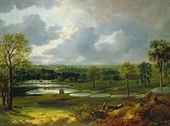
|
Holywells Park, IpswichOil on canvas |
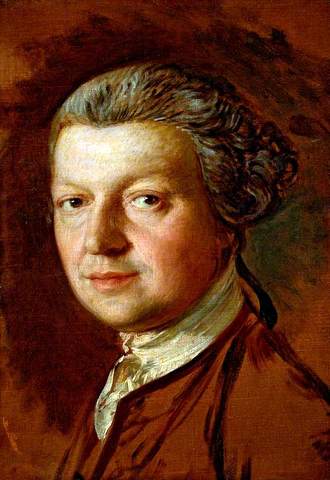
|
Joshua Kirby (1716–1774)Oil on canvas
|
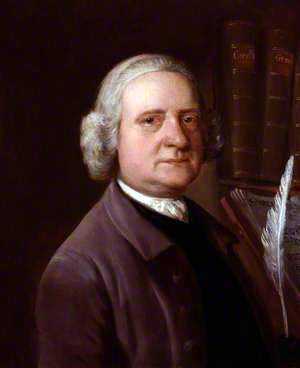
|
Joseph GibbsOil on canvas
|
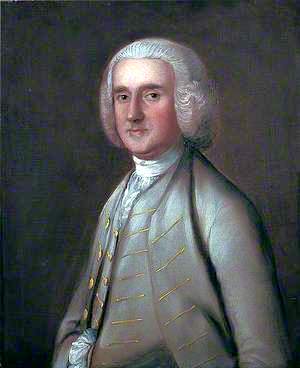
|
John Sparrowe, Bailiff of IpswichOil on canvas
|
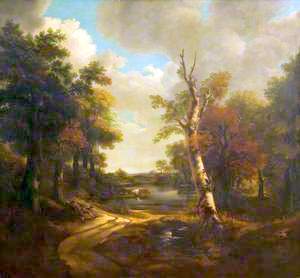
|
View of Drinkstone Park, Stowmarket, SuffolkOil on canvas
|